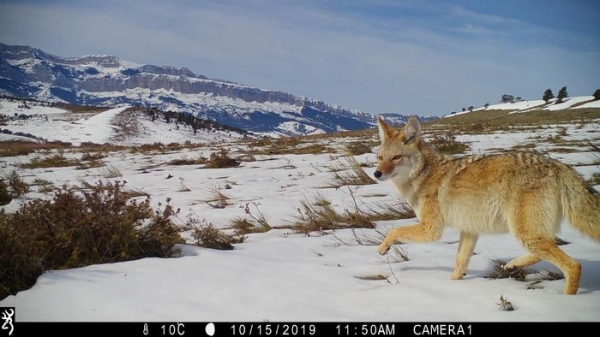Once a rare sight in the northeastern United States, the eastern coyote has become a common presence across New Hampshire’s forests, farms and suburbs. First arriving in the state in the 1940s from the Midwest, these predators have since spread throughout every county and are keen adapters to regular interactions with humans, livestock and larger carnivores. The reasons for this adaptability, however, have remained understudied. A new study by researchers with the New Hampshire Agricultural Experiment Station (NHAES) at the University of New Hampshire (UNH) provides a detailed assessment of coyotes respond to environmental pressures, including hunting and competition with larger predators like black bears and pumas.
Published in the journal Ecography, the paper “People or predators? Comparing habitat‐dependent effects of hunting and large carnivores on the abundance of North America's top mesocarnivore” was co-authored by Station scientist Remington Moll, an assistant professor at UNH’s College of Life Sciences and Agriculture, and Roland Kays, a research professor with North Carolina State University’s College of Natural Resources. The study used data from over 4,500 camera traps set across the country by the SNAPSHOT USA project. Surprisingly, the study’s findings suggest that human hunting practices may actually contribute to increasing coyote numbers.
“Intensive coyote removal can obviously reduce populations in the short-term, but removal can also result in younger coyote populations with higher reproduction and immigration rates,” explained Moll. “In our study, we detected more coyotes in places where hunting was allowed. This change occurred over several years, suggesting that, on average, hunting did not reduce coyote abundance and perhaps increased it locally in certain areas.”
Researchers from the University of New Hampshire used data from over 4500 camera traps to study coyotes across multiple different habitats and found that human hunting did not reduce populations but instead led to an increase in coyote numbers, perhaps due to reproduction and immigration rate (Photo Credit: Snapshot USA)
Sci/Tech Top Stories Wildlife

